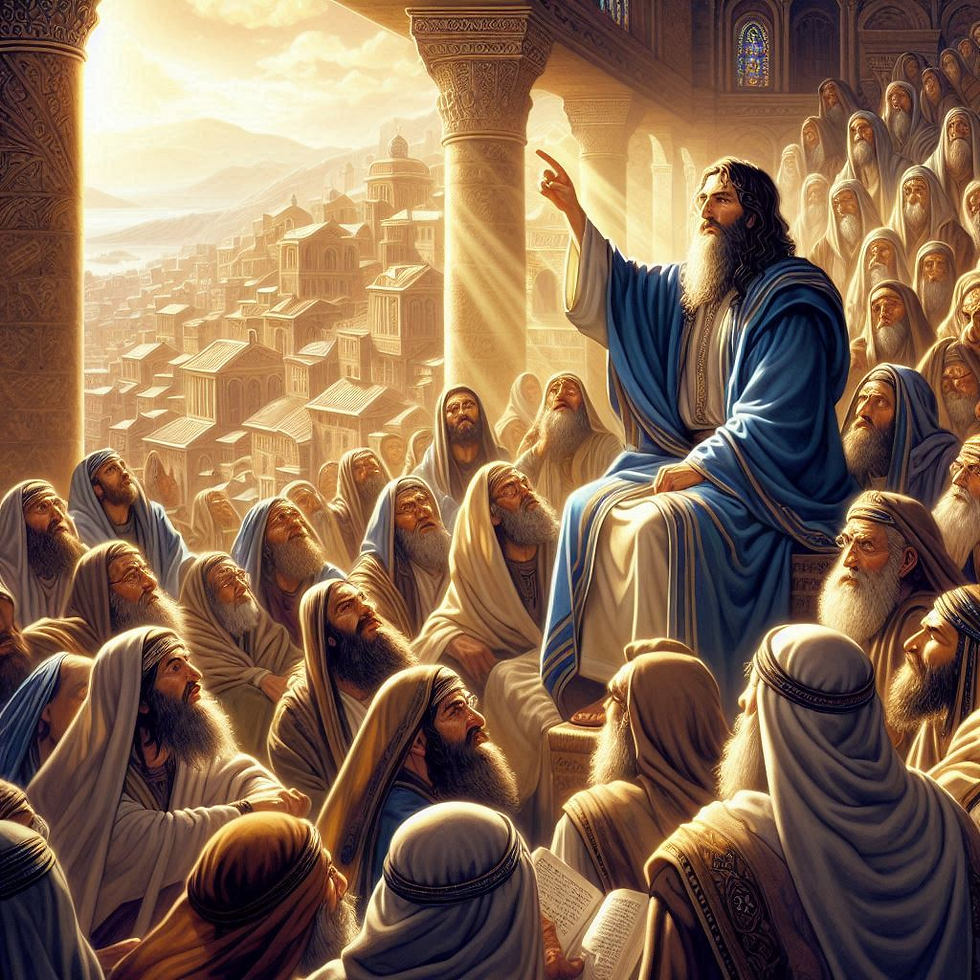The Return to Jerusalem
After seventy long years of exile in Babylon, the Jewish people were finally given a chance to return to their homeland. This opportunity came when King Cyrus of Persia issued a decree allowing them to go back and rebuild the temple in Jerusalem. The first group of exiles, led by Zerubbabel, set out on this journey with hope and determination.
Upon arriving in Jerusalem, they faced numerous challenges. The city lay in ruins, and the temple, once the center of their worship, was a mere shadow of its former glory. Despite opposition from neighboring peoples, the Jews began the arduous task of rebuilding the temple. It took many years, but their perseverance paid off, and the temple was completed during the reign of King Darius.
Years later, another group of exiles, led by Ezra, a priest and scribe, returned to Jerusalem. Ezra was a man deeply devoted to the Law of the Lord. He had spent his life studying and teaching God’s decrees, and he was determined to restore the spiritual life of the people.
When Ezra arrived in Jerusalem, he found that many of the Jews had intermarried with the surrounding nations, adopting their practices and straying from God’s commandments. This deeply troubled Ezra, and he fell to his knees in prayer, confessing the sins of the people and seeking God’s mercy.
Ezra’s heartfelt prayer and leadership sparked a spiritual revival among the Jews. They renewed their covenant with God, promising to follow His laws and separate themselves from the practices of the surrounding nations. Under Ezra’s guidance, the people of Israel began to rebuild not just the physical temple, but their spiritual lives as well.
Through the efforts of leaders like Zerubbabel and Ezra, the Jewish people were able to reclaim their identity and renew their faith. The Book of Ezra reminds us of the importance of perseverance, faith, and the power of returning to God.
Ezra’s Reforms and the Renewal of the Covenant
After Ezra’s arrival in Jerusalem, he quickly realized that the people had not fully adhered to the laws of God. Many had intermarried with the surrounding nations, which was against the commandments given to Israel. This intermingling had led to the adoption of foreign customs and practices, threatening the spiritual purity and identity of the Jewish people.
Ezra was deeply distressed by this situation. He tore his clothes, pulled hair from his head and beard, and sat down appalled. His public display of grief drew the attention of many Israelites, who gathered around him. Ezra then led the people in a heartfelt prayer of confession, acknowledging their sins and seeking God’s forgiveness.
Moved by Ezra’s sincerity and leadership, the people agreed to take drastic measures to rectify their wrongs. They decided to separate from their foreign wives and children, a painful but necessary step to restore their covenant with God. This decision was not taken lightly, and it involved a thorough investigation and a public assembly where each case was addressed.
Ezra’s reforms didn’t stop there. He also focused on educating the people about the Law of Moses. He gathered the leaders, priests, and Levites and taught them the statutes and ordinances of the Lord. This renewed emphasis on the law helped to reestablish a sense of order and holiness among the people.
The Book of Ezra concludes with a list of those who had married foreign women and the steps taken to resolve these issues. This period of reform and renewal was crucial in reestablishing the Jewish community in Jerusalem and ensuring their commitment to God’s commandments.
Through the leadership of Ezra, the Jewish people were able to overcome significant challenges and renew their dedication to God. The story of Ezra highlights the importance of spiritual leadership, the power of repentance, and the need for a community to stay true to its faith and identity.
Ezra’s Leadership and the Community’s Renewal
Ezra’s leadership was pivotal in guiding the Jewish community through a period of significant spiritual renewal. After addressing the issue of intermarriage, Ezra continued to focus on teaching the people the laws of God. He understood that for the community to thrive, they needed a strong foundation in their faith and adherence to the Torah.
Ezra organized a public reading of the Law. This event took place in a large assembly, where men, women, and children gathered to hear the words of the Torah. Ezra stood on a wooden platform built for the occasion and read from the Law from morning until midday. The Levites, who were the priests and teachers, moved among the people, explaining the meaning of the text and ensuring everyone understood.
This public reading had a profound impact on the community. As the people listened, they were moved to tears, realizing how far they had strayed from God’s commandments. Ezra and the Levites encouraged them not to mourn but to celebrate, for understanding the Law was a cause for joy. They declared a holy day and instructed the people to feast and share their food with those who had none.
Following this, the people made a renewed commitment to follow God’s laws. They entered into a covenant, promising to obey the commandments, observe the Sabbath, and support the temple and its services. This covenant was sealed with the names of the leaders, priests, and Levites, symbolizing the collective commitment of the community.
Ezra’s efforts were instrumental in reestablishing the Jewish identity and faith in Jerusalem. His dedication to teaching the Law and leading by example inspired the people to return to their spiritual roots and live according to God’s will.
The story of Ezra is a powerful reminder of the importance of spiritual leadership, the transformative power of God’s word, and the strength that comes from a community united in faith.


コメント